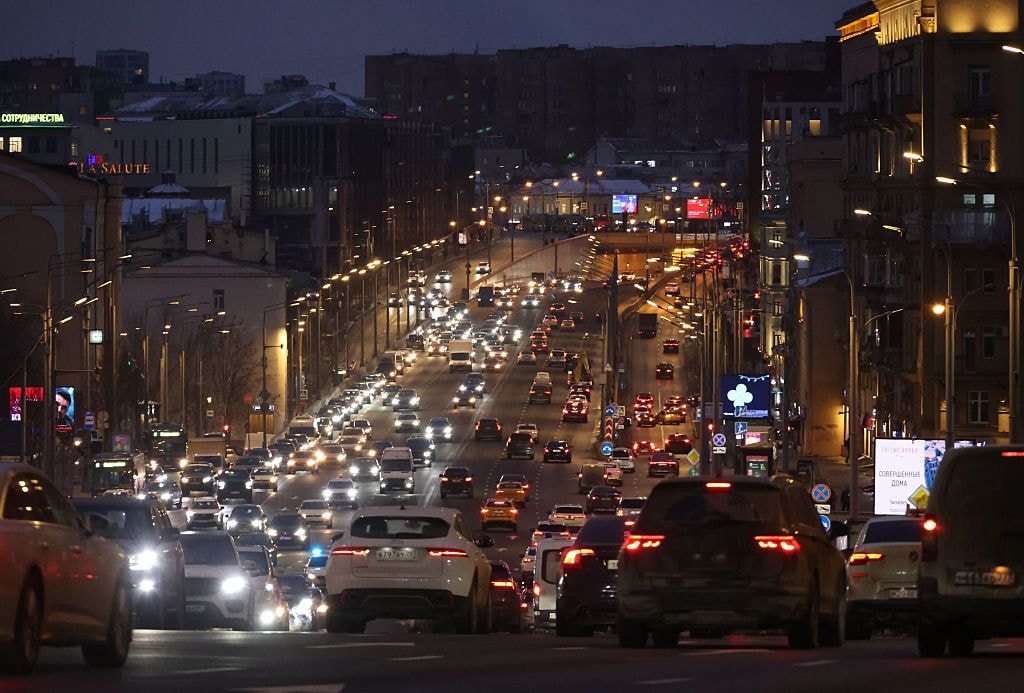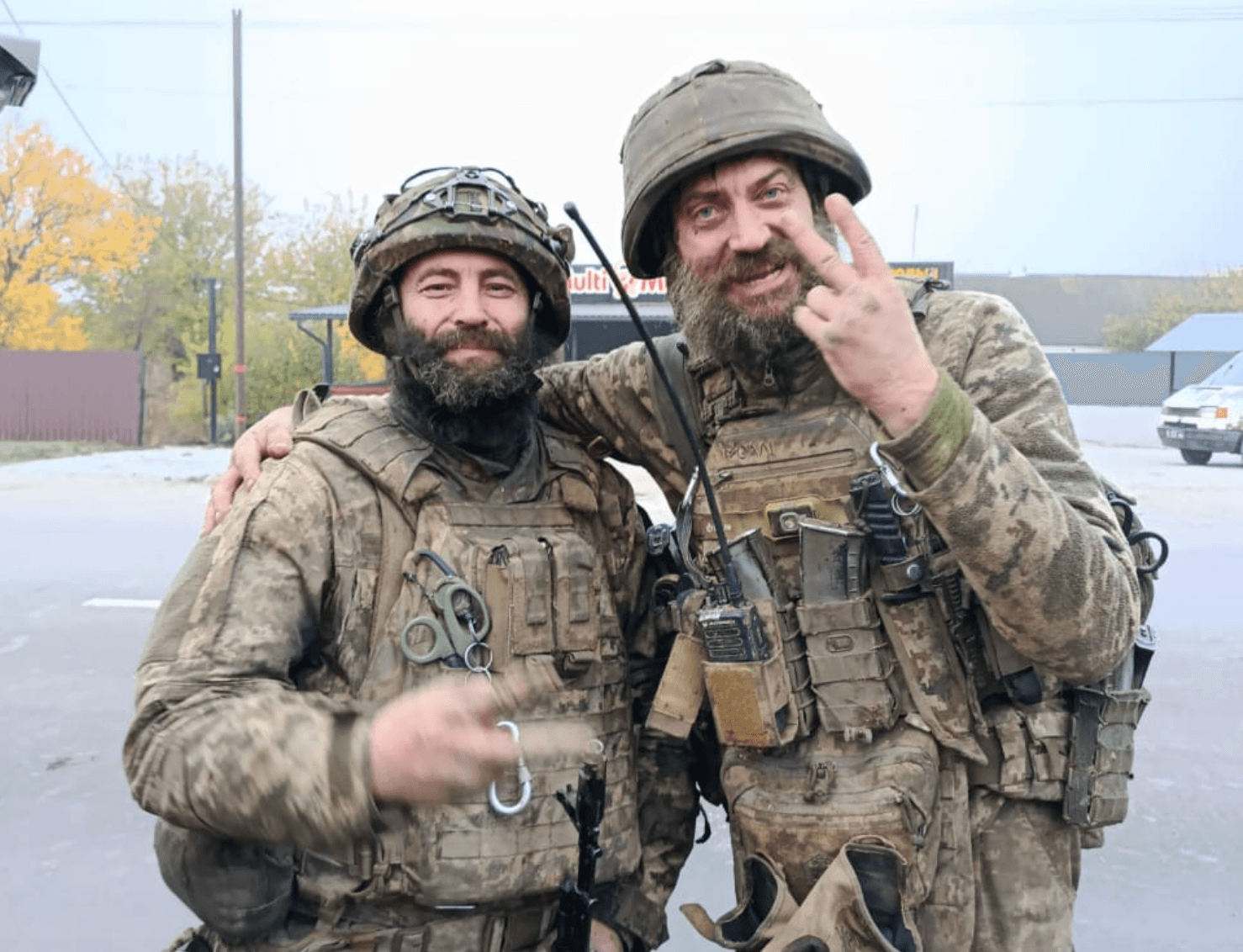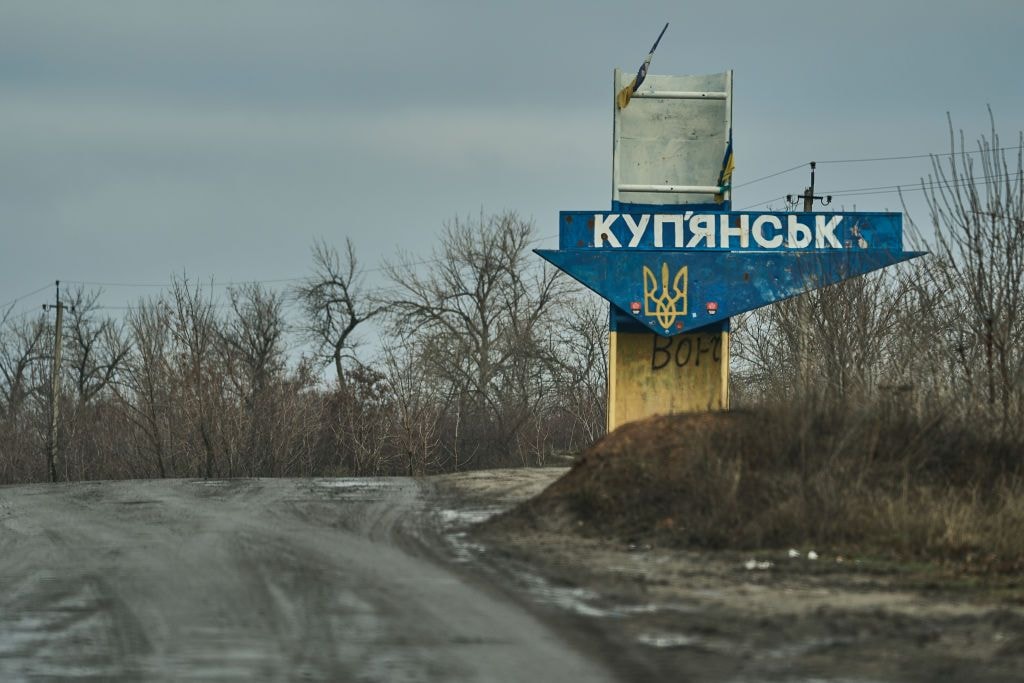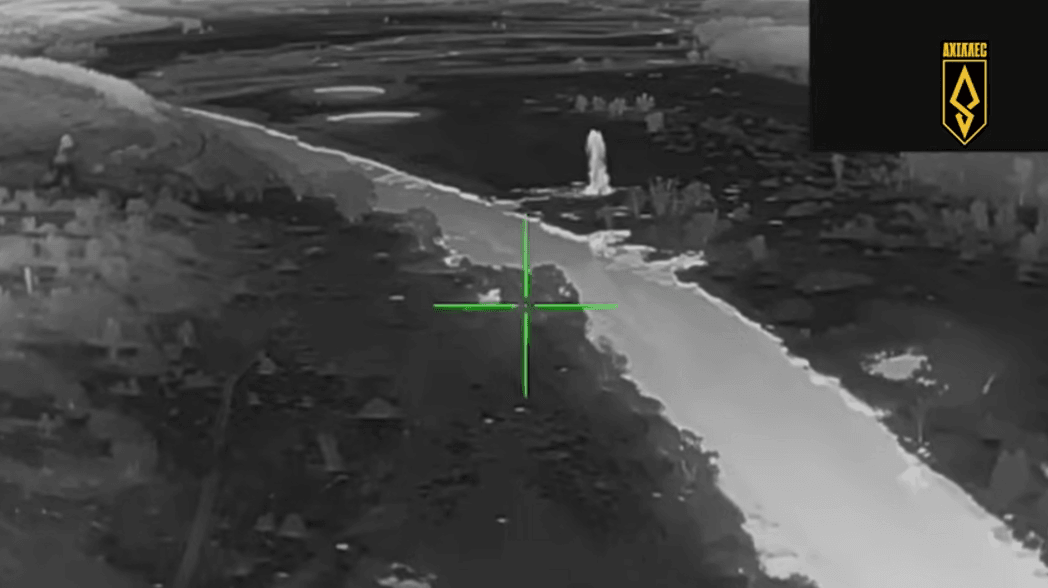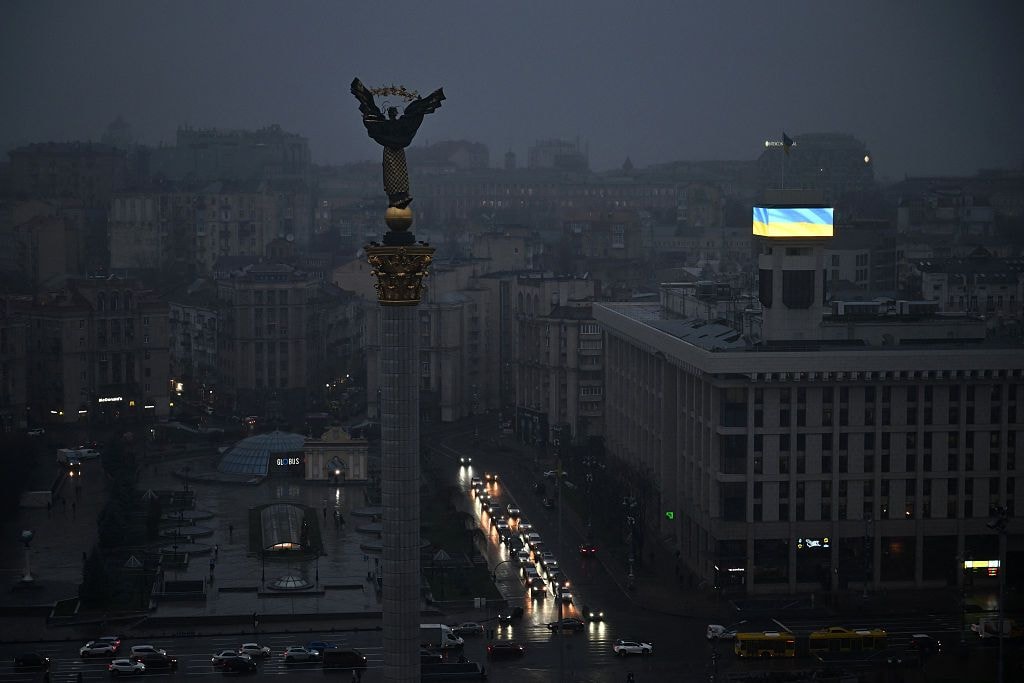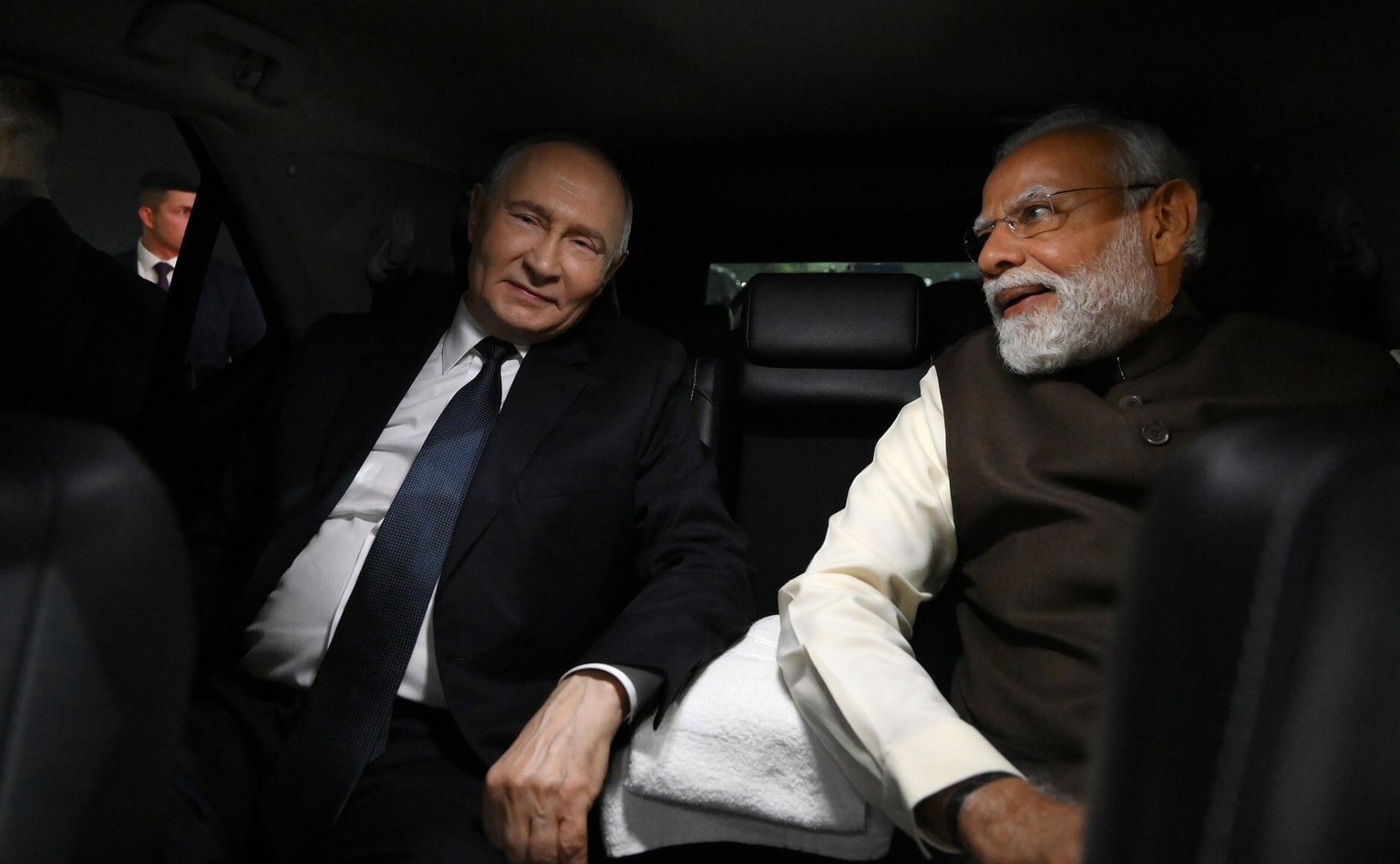
‘We cannot survive’ without foreign weapons, say Ukrainian soldiers fearing looming Trump cuts
Ukrainian soldiers lament low-quality local ammunition production, boding ill for a war effort without foreign weapons aid.
Ukrainian soldiers of the 43rd Brigade work on a Soviet-era Pion self-propelled howitzer near Chasiv Yar, Ukraine, on Jan. 27, 2025. (Wolfgang Schwan / Anadolu via Getty Images)
A looming dropoff in U.S. weapons deliveries is threatening to strain Ukraine’s budding domestic arms production to the breaking point.
As U.S. President Donald Trump’s administration prepares negotiations with their Russian counterparts, Ukrainians fear being cut out of negotiations — and cut off from future U.S. support, including weaponry.
Despite Ukraine placing massive bets on localizing arms production, the outlook is grim for a self-sustained Ukrainian war effort. Clever front-line improvisations in drones and electronic warfare have yet to overcome Russia’s wartime output of tanks, mortars, missiles, and mines. Russia’s drones are, moreover, not half bad.
When it comes to armor, Ukraine is often left rehabbing old Soviet vehicles. Ukraine’s military still needs to ask the West for a steady stream of long-range missiles and precision air defense. Continuing failures in artillery reveal a core weapons industry that cannot deliver simple weapons en masse.
Ukraine has a “very low chance of survival” without U.S. weapons, President Volodymyr Zelensky told NBC News on Feb. 15.
Ukraine has built out its domestic arms production in a big way since the Russian war machine rolled in on Feb.24, 2022. Speaking to Piers Morgan last month, President Volodymyr Zelensky said 40% of Ukraine’s weapons are made in Ukraine, as opposed to 10% of total arms used at the outset of Russia’s full-scale invasion.
One of the points of Russia’s greatest advantage since the outset of the war is artillery. Specifically, mortar shells — a disparity that Ukraine has tried hard to balance.
Ukraine’s Strategic Industries Minister Herman Smetanin has said that Ukraine already produced 50% of its artillery ammunition in 2024, and will produce “just about everything we use” in 2025.
Smetanin’s recently reassigned predecessor Alexander Kamyshin said in September that Ukraine had begun producing 155 mm shells — a NATO standard size for howitzers, as opposed to the Soviet 152 mm.
But the problem is simple, says Roman “Cat” Kotliarov, an artillerist in the Ukrainian military who recently relocated from Donbas to man a 122 mm mortar in northern Kharkiv Oblast, near the Russian border. “Those shells are no good,” referring to Ukrainian-made mortar shells.
“If you're talking about Ukrainian mortar shells, which are produced in Ukraine, they’re very low quality. I don't like to work with them,” Kotliarov told the Kyiv Independent.

About 70% of the ammunition that reaches Kotliarov and his team these days is made in Ukraine. His four-man crew is scared to use them.
“Last time I was in a position where my guys were fighting, they put a shell in the mortar. It made a boom and the shell fell five meters away from them,” Kotliarov said. “It's very dangerous. Thank god my guys are alive and everything’s ok.”
An embarrassing series of investigations from Ukrainian outlet Suspilne forced the Strategic Industries Ministry to recall some 30,000 defective mortar shells in January. In addition to incompetence, those reports suggest a siphoning off of powder somewhere along the supply line. Accounts like Kotliarov’s show that bad shells continue to dog soldiers rebuffing Russian assaults.
The functional mortar shell supply remains dependent on international detritus.
“The U.S., Poland, Italy — we even get mortar rounds from India. Foreign shells are more or less ok,” he continued. “Ukrainian shells, where my president spent a lot of money — they’re trash.”
“The only Ukrainian-made mortar I used was made in Sumy. In 1942.”
Another soldier, a captain by the call sign of “Artem” who recently rebased after two and a half years in frontline artillery to a desk job in Kyiv, is similarly critical of Ukraine’s local production of the mortars themselves.
“The only Ukrainian-made mortar I used was made in Sumy. In 1942,” he told the Kyiv Independent. “It weighed maybe 800 kilograms.” Contrary to government announcements, the situation, he says, has not improved.
The struggle with shells is just one striking case study in the broader reality of Ukrainian manufacturing of traditional weapons.
As for armored vehicles and tanks, local production is too often just refurbishment of Soviet-era equipment. And indeed Ukrainian local war vehicle makers like Ukrainian Armor have converted their factories to produce shells.
A representative for the Strategic Industries Ministry declined to comment, other than to describe the shell industry as “sensitive.” Kotliarov was more forthcoming.
“Without (U.S.) assistance, we cannot survive,” said Kotliarov.
The problem of gunpowder
The mishmash of shells from different countries and eras required Artem’s team to empty, weigh, and reapportion gunpowder between them in various warehouses near the front.
Gunpowder is a key issue. A global arms race in response to Russia’s invasion of Ukraine has led nations to scrape the bottom of the powder barrel.
As one example, General Dynamics’ ordnance subsidiary, among the largest ammunition manufacturers in the world, said in its February annual report that it plans to grow its potential powder production from 5 million to 16 million pounds by 2028.
Ukraine makes none of its own powder, despite tentative experiments to grow cotton to turn into powder.

So while local shell producers have emerged, they’re limited. Steel Hornets, for instance, produces the empty casings for shells, but leaves it up to soldiers receiving the shells to fill them, a representative told the Kyiv Independent.
While Western nations have given Ukraine much of their old arms stockpiles, it’s been less generous with raw materials that Ukrainian industry could use to make its own equipment.
“Western countries are not interested in supplying raw materials,” says Kateryna Bondar, a Ukrainian fellow at the Center for Strategic and International Studies. “They see a market for European defense companies in Ukraine.”
On the plus side for Ukraine, Russian equipment is riddled with many identical problems — Soviet flotsam and jetsam rehabbed and presented as something shiny and new. On the downside, Russia’s top-down arms industry is nonetheless producing traditional military gear at a scale that Ukraine simply cannot match.
Foreign firepower
The growth of the Ukrainian defense industry has also depended on foreign money. Information Joe Biden’s administration released in its twilight hours claimed that the U.S. had put over $2 billion into Ukraine’s much-vaunted domestic drone industry.
At Davos, Zelensky continued to plead for foreign money into Ukrainian drones as key to Europe’s future security.
“I think the general intention and idea is to cut off any military support.”
The U.S. weapons supply is at risk of crumbling, calling into question Ukraine’s ability to defend itself unaided.
“I think the general intention and idea is to cut off any military support,” Bondar says, describing the Trump administration’s posture toward Ukraine.
The fault is far from Ukraine’s alone. The EU and the U.S. are failing to keep up with collective quotas. Despite having an economy less than a tenth the size of either the U.S. or EU, Russia is still outproducing the entire West in key areas like ammunition for artillery.
Western arms giants ranging from the German Rheinmetall to the U.S. Northrop Grumman have announced factory agreements to set up production inside of Ukraine. Their output within Ukraine is questionable.
Rheinmetall CEO Armin Papperger, last year the subject of a foiled Russian assassination attempt, told German news outlet DW that the firm’s 155mm factories in Ukraine won’t be up and running until 2026.

That’s not to say all of Ukraine’s weapon localization is stalled or glitching. The wartime birth of local mass production of technological weapons, especially drones, electronic warfare, and communications systems has been impressive — and vitally useful.
But when it comes to high-tech traditional weapons like long-range missiles, Ukraine remains in a bind, partially because it is dependent on a goodwill supply of Western components like high-end inertial guidance modules or jet engines that Russia gets from China or via sanctions evasion.
On the plus side, the U.S. may well have overestimated its own weapons deliveries to Ukraine, meaning that they make up a smaller proportion of existing arms. And at least politically, the EU remains more supportive of Ukraine than the new Trump administration, and European leaders are at least talking about escalating their own weapons production as U.S. protection looks less stable.
But the largest economies of the EU have been slow to deliver on promised military industry expansion and have run through much of their pre-2022 stockpiles. That’s especially true from neighbors from the former USSR or broader Warsaw Pact, who have been proportionately the most generous to Ukraine and who, like Ukraine, had Soviet weaponry lying around.
Ukrainians consequently fear a pending cliff in weapons deliveries from both the U.S. and EU. The question is what Ukraine can and can’t make on its own.
“I think Ukraine is very far away from being self-sufficient because the front line is huge, and the adversary is powerful and backed up by China,” says Bondar.
“Ukraine is not able to sustain and not able to defend itself.”


